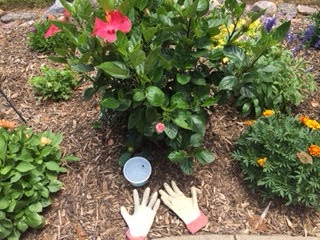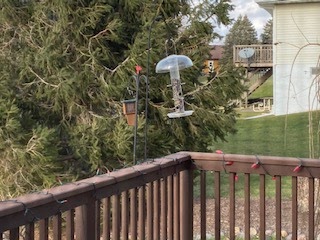At war ... With a beetle
Three American Linden trees line our concrete driveway. Many months of the year, they are majestic, gorgeous trees with a background in the U.S. that dates to the 1750s.
American Lindens, alas, are also the preferred food of Japanese beetles. Introduced in the United States in 1916, the beetles arrived in my yard about 17 years ago.
I chose the linden trees on the advice of a local garden expert, never dreaming they would have an enemy like this beetle. Unfortunately the trees are now about 25-30 feet tall, so most chemical prevention applications are not feasible. Plus, I prefer to address this issue in a way that does not affect beneficial pollinators.
Each day I pick them off a small Hibiscus tree and Hibiscus bush I've planted and dump those beetles into hot soapy water. I pour boiling water on them when feeling especially vicious.
The beetles are also present on the driveway in the early-morning hours, so for two weeks I'd go outdoors about 6:30 or 7 a.m. and sweep the beetles into a bucket of hot soapy water. More recently I built three traps for beetles, with advice from the "Old Farmer's Almanac." This means, I bought three cans of mixed fruit, opened each one and let it ferment for about a week, and then placed each can in a bucket of water. Since it was early July, I added patriotic ribbons to the three buckets.
I also step on the beetles I see on the driveway every morning and monitor the afore-mentioned plants. There are fewer beetles in the driveway these days, thankfully.
Japanese beetles come from slugs in the ground, and a very cold winter will kill the slugs before they grow up. But we've had outbreaks for several summers in a row, so I guess the winters haven't been cold enough!
I first spotted the beetles on June 20 and they are expected to eat the tree leaves for 4-6 weeks, total. That means this torture should end by Aug. 1.
Experts say the beetles are now part of our lives for eternity. Sigh.
Updated July 10: We sweep up the dead linden leaves every day, and move those over to the environmentally-friendly neighborhood landfill. I continue to monitor the hibiscus plants, and last week caught a beetle in flight. Score! I'm also going to look into the viability of a treatment process that might be available locally: Entomopathogenic nematodes would help prevent the beetle damage, it appears, and NOT harm pollinators. I'll keep you all posted! DCB





Comments
Post a Comment